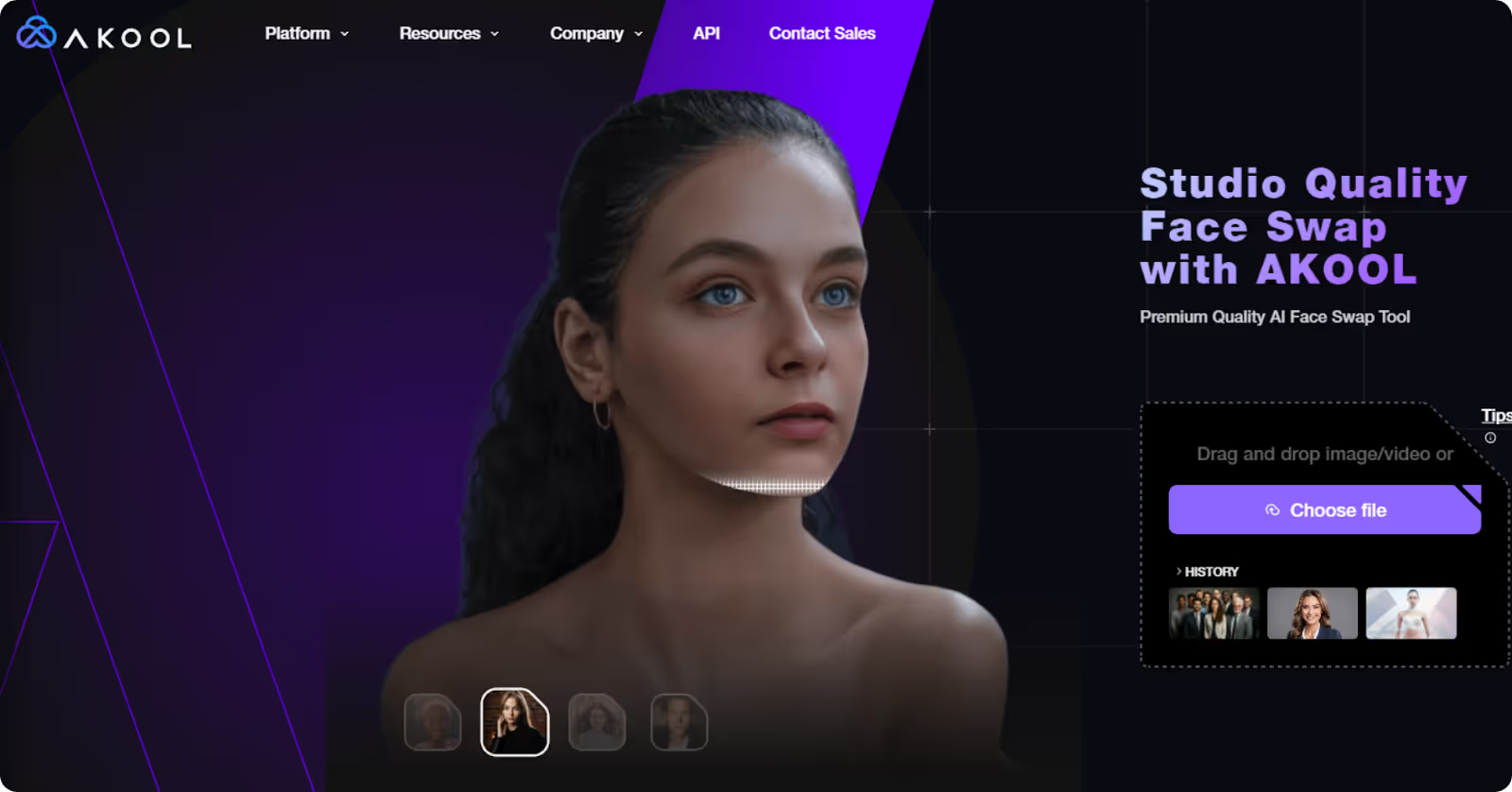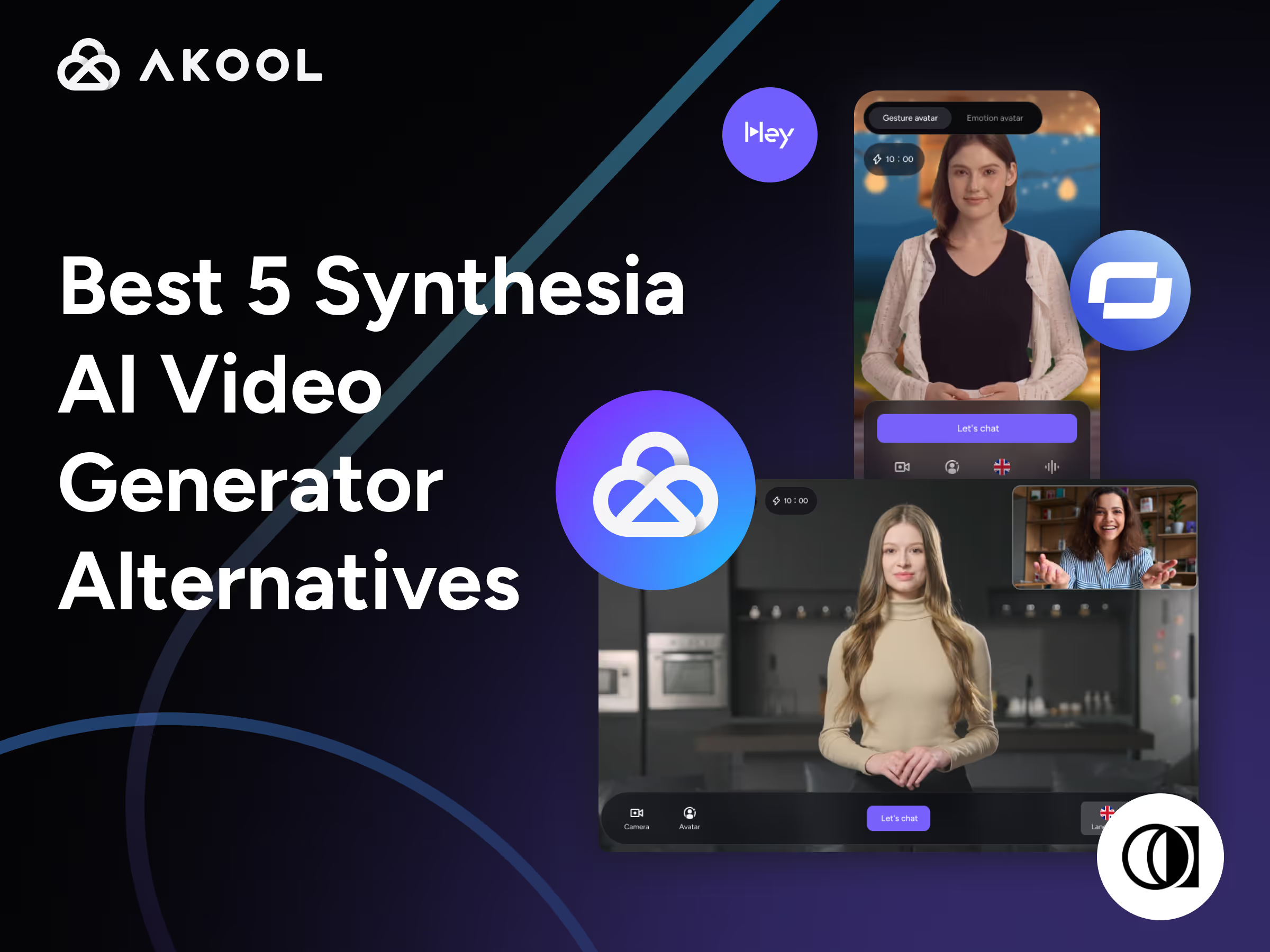AI face swap tools are revolutionizing YouTube content creation by making it easier and faster to repurpose footage, localize videos, or add creative twists without expensive re-shoots or advanced editing skills. By letting creators replace faces in existing clips, these tools save the cost and time of filming new scenes, instead allowing content to be tailored or translated for different audiences with minimal effort. With a few clicks, an AI YouTube video maker that supports face swapping can insert you or another character into a video – whether it’s a horizontal long-form clip or a vertical Short – all while preserving expressions and lip movements for realistic results. Below we explore five top AI face swap video tools and how they help creators innovate content.
1. Pica AI — Quick and Simple Face Swap Video Tool
Pica AI is an intuitive online face swap platform that quickly swaps faces in photos and short videos. It’s essentially an easy ai youtube video maker for face-swapped content, requiring no technical skills – just upload your video and a new face, and Pica’s AI merges them seamlessly. Creators can transform themselves into movie characters or swap friends’ faces for memes within minutes.
Key Features:
- Instant Face Swaps: Replace faces in images or videos in seconds (photos) or minutes (videos) via a simple upload process. Pica preserves the original facial expressions for a natural look in the output video.
- Multi-Face Swap: Swap up to three faces in one image or clip. This means in a group photo or scene, multiple people’s faces can be changed at once.
- Photo & Video Support: Works on both static images and video footage. You can download results as an MP4 or even a GIF once the swap is complete.
- Template Library: Offers fun templates and style options (e.g. swap into a 90s yearbook or a painting) to spark creative face-swap ideas, helping videos stand out.
- Free Online Access: Pica AI runs in the browser with a free trial (no install needed). Users get a few credits to try face swaps for free upon signup.
Use Cases: YouTube creators use Pica AI for quick, comedic content and experiments. For example, you can create meme-worthy Shorts by swapping your face with a celebrity in a viral clip, or make a reaction video where your face replaces a movie character to dramatize a scene. It’s also handy for repurposing content – e.g. taking an old vlog and swapping in a friend’s face for a parody. The tool’s speed and simplicity make it ideal for generating attention-grabbing visuals or fantasy collabs without needing advanced editing.
Limitations: Pica AI’s free tier is quite limited (only a few swaps before requiring a subscription). Videos longer than a minute can be slow to process (a 1-minute clip can take over an hour) and the free outputs include a watermark. Additionally, it can only detect up to 3 faces per image/video, so very large group swaps may miss people. For longer, high-resolution projects without watermarks, an upgrade is needed.
2. Remaker AI — Efficient Face Swap Engine for YouTube Clips
Remaker AI is a powerful face swap platform known for its efficiency and quality in handling YouTube-length clips. It supports both single and multiple face swaps in photos and videos, producing highly realistic results. Compared to basic tools, Remaker offers a wider range of portrait editing features and handles more faces in a scene with ease, making it a robust engine for creators.
Key Features:
- High-Quality Swaps: Remaker’s AI delivers superior face blending quality, seamlessly integrating the new face while maintaining the video’s natural look. It’s known for photorealistic output that looks polished on larger screens.
- Multi-Face Video Swap: Unlike many tools, Remaker can swap multiple people’s faces in one video simultaneously. This is useful for group vlogs or scenes with many characters – you can, for instance, swap an entire cast’s faces in a clip at once.
- Batch Processing: The platform supports batch face swaps across multiple images or videos, enabling creators or agencies to process several clips in one go. This efficiency is a boon for those repurposing content or managing bulk edits.
- Cross-Platform & Mobile App: Remaker AI is available via web and also offers mobile apps (iOS/Android), so creators can swap faces on the go. The interface is translated into multiple languages, reflecting a global user base.
- No-Watermark Free Mode: For basic image swaps, Remaker allows free use without watermarks or sign-up. This lets new users experiment freely (though high-resolution video swaps may require credits or a paid plan).
Use Cases: YouTube creators utilize Remaker AI for creative storytelling and editing fixes. For example, a creator can produce a comedy sketch by swapping their face onto multiple actors in a movie clip – all in one render – for a parody video. Reaction channels might use it to put a YouTuber’s face on a meme or film scene for humorous commentary. It’s also handy for localizing content: e.g. swapping in a local actor’s face to re-use a popular video format in another region. With batch and multi-swap, Remaker is efficient for creators who need to generate variants of videos (different faces or personas) and ensures everyone in a group shot can be swapped accurately.
Limitations: While Remaker is powerful, longer videos with HD swaps can still take time to process (high-quality face replacement is computationally heavy). The free image swaps are watermark-free, but to swap faces in full-length videos or to get watermark-free video output, you’ll likely need a paid plan or credits. The interface, with its many options, might be a bit overwhelming for absolute beginners compared to simpler one-click tools. Finally, as a cloud service, very large file uploads have size limits and depend on server load, which could affect speed for ultra-long clips.
3. Akool — All-in-One AI Face Swap and YouTube Video Maker

Akool stands out as an all-in-one AI video creation suite that integrates face swapping with other AI superpowers. This platform not only lets you do Hollywood-grade face swaps in videos, but also offers automated voice dubbing and avatar generation – making it a comprehensive AI YouTube video maker solution. With Akool, creators can swap faces in 4K footage, translate the speech into other 155+ languages with synced lip movements, and even create talking AI avatars, all in one toolkit.
Key Features:
- Ultra-Realistic Face Swapping: Akool uses advanced AI to create face swaps with 99% facial accuracy, preserving micro-expressions and details so the result looks eerily natural. It handles high resolutions (up to 4K or even 8K) and difficult cases like fast motion or occlusions without losing quality.
- Multilingual Video Dubbing: A built-in video translation feature can translate and dub videos into 50+ languages, auto-synchronizing the new audio with the speaker’s lip movements. This means you can record a video in one language and Akool will generate a version where you (or your avatar) appear to speak another language fluently – a huge benefit for creators targeting global audiences.
- Talking AI Avatars: Akool provides a talking avatar generator, allowing you to create lifelike AI presenters. You can choose from hundreds of stock avatar characters or even create a custom avatar of yourself, which will blink, gesture, and speak with emotion. This is great for narration, tutorials, or virtual influencer content.
- 3-in-1 Workflow: The platform combines face swap, voice cloning, and text-to-video capabilities, streamlining what would normally require multiple tools. It’s designed for ease of use, so even without editing experience you can upload a video, select face swap + dubbing options, and let the AI produce a finished, edited video in minutes.
- Generous Free Trial: Akool offers a free tier for new users to test its features (currently allowing about 1.5 minutes of video face swapping and generation at 720p with watermark) – quite generous compared to many competitors. This lets creators try out face swaps and multilingual videos before committing to a subscription.
Use Cases: Akool is ideal for creators looking to scale and localize their content. For example, a tech reviewer on YouTube could use Akool to swap their face into stock footage or product shots for a slick promo, then automatically generate versions of the video in Spanish, French, and Chinese with lip-synced narration – massively extending reach without re-filming. Storytellers can create virtual collaborations, swapping themselves alongside celebrities or fictional characters and even cloning voices for skits. Akool’s avatar feature also enables educational or corporate YouTubers to produce videos with a professional AI host delivering the script. In short, Akool can handle everything from a fun face-swap parody to a multi-language series, all within one platform.
4. Magicam — Stylized Face Swapping for Entertainment Content
Magicam is a unique face swap tool geared towards real-time entertainment and creative flair. It allows creators to perform face swaps and voice changes live, making it perfect for streamers and YouTubers who want to add a stylized, theatrical element to their content. Magicam can swap your face in real-time during video calls or recordings, even letting you appear as different characters on Zoom, Twitch, or YouTube streams. With its focus on live face & voice transformation, Magicam brings a playful, on-the-fly vibe to content creation.
Key Features:
- Real-Time Face & Voice Swap: Magicam can swap faces live using just one photo of the target face, thanks to advanced neural networks. Simultaneously, it includes a live voice changer and even voice cloning, so you can sound like the person you’re impersonating in real time. This synchronized face-and-voice swap sets it apart as an interactive tool.
- High-Quality Video Outputs: Despite being real-time, Magicam achieves impressive quality. It offers up to 4K HD video face swaps for recorded videos in its Pro mode. The results have unparalleled quality for live swapping, maintaining smooth motion and accurate face mapping even as you move.
- Streaming Integration: Magicam has a built-in virtual camera feature, making it easy to integrate with streaming platforms or video conferencing (works with Zoom, OBS, Twitch, etc.). Creators can toggle the face swap on during live streams to entertain viewers or stay anonymous behind a digital face.
- Unlimited Usage (Pro): The Pro version removes most limits – you get unlimited face swap duration and face uploads, no watermark, and even unlimited voice cloning for long-form content. This is great for power users who want to produce lots of swapped content or lengthy videos.
- Privacy by Local Processing: Uniquely, Magicam processes all face swaps locally on your PC (it requires a decent GPU). This means your video feed isn’t sent to the cloud, which appeals to creators concerned about privacy. It also enables offline use once the software is installed.
Use Cases: Magicam shines for entertainment and live engagement. YouTubers and streamers use it to create on-the-spot humor – for instance, doing a live Q&A as a famous celebrity by swapping that celebrity’s face and mimicking their voice. It’s popular for gaming streams too: a streamer can appear as a game character or put on a funny face filter in real time to react to events. For prerecorded content, Magicam can be used to film sketches where one person plays multiple roles (swapping faces and voices for each character). The tool’s quick toggle ability also makes it useful for virtual collaborations or interviews – e.g. bringing in a “guest” by live-swapping a guest’s face onto yourself for a creative twist. Overall, Magicam adds a dynamic, stylized layer to content that thrives on spontaneity and audience surprise.
Limitations: Magicam’s advanced real-time swapping requires a powerful computer with a high-end GPU to run smoothly. This hardware requirement means it’s not as accessible if you only have a basic laptop. Also, unlike purely online tools, you must download and install the app (currently it’s primarily for PC). The free version of Magicam is feature-limited – for example, it adds a watermark and restricts resolution/voice cloning until you upgrade. Finally, while it’s easy to use for basic swaps, getting the best results may involve tweaking settings (Magicam offers an advanced tuning mode for fine-tuning face alignment, available in Pro). Despite these, for creators focused on interactive and fun content, the investment in setup is often worth the creative possibilities.
5. Luna AI — Face-Sync Avatars for Multilingual Video Creation
Luna AI focuses on AI-generated talking avatars with precise face-syncing, making it ideal for creators who want to produce videos in multiple languages or create virtual presenters. Instead of swapping your face into existing footage, Luna AI lets you create a digital avatar (which could be a clone of your own face or a fictional character) and have it speak any script in different languages with perfectly synced lip movements. It’s like having a multilingual virtual actor at your disposal, which is incredibly useful for YouTube tutorials, marketing videos, or global content outreach.
Key Features:
- AI Talking Avatars: Luna AI can generate a realistic avatar from a single photo (or you can choose from preset characters). This avatar’s facial expressions and lip movements are driven by AI so that it speaks your input script naturally on video. The result is a lifelike talking head video without any camera filming.
- Multilingual Lip-Sync Tech: A standout feature is the ability to produce multilingual videos. You can input text (or audio) in dozens of languages, and the avatar will deliver the lines with accurate lip synchronization and proper pronunciation. In other words, Luna AI makes it possible to dub a video into new languages while the avatar’s mouth moves convincingly with the new speech.
- Face Swap Integration: Luna also has a face swap component – for example, you might swap your face onto a base avatar or character, then have that character speak. This means you can appear on camera virtually, with the style or body of another persona, which adds creative freedom in content creation.
- Customizable and Stylized Outputs: Users can tweak the avatar’s appearance, background, and voice style. Whether you need a professional narrator avatar for an explainer video or a fun cartoon-like character for a kids’ channel, the tool offers styles ranging from realistic to animated. It adapts to the tone you want while keeping the lip-sync accurate.
- Easy Video Generation: Like many AI video generators, Luna AI is designed for ease – just input your script (or even upload an existing video to translate), select your avatar or face swap target, and generate the video. It’s cloud-based, so no heavy rendering on your device. The interface guides you through creating a polished video with subtitles and audio in your chosen language.
Use Cases: YouTube creators are leveraging Luna AI to expand their reach and creativity. For instance, an educator on YouTube can create one video in English and then use Luna AI to have their avatar “re-speak” the entire lesson in Spanish, Mandarin, and Arabic, producing localized versions that look native to each language. This face-sync dubbing is done without reshooting any footage or hiring translators – the AI handles the speech and facial sync automatically. Marketing channels use Luna’s avatars as virtual spokespersons to deliver product pitches in multiple languages, or to appear as different characters interacting (since you can generate dual-avatar conversations). Even for narrative content, a creator could generate a sci-fi short film with AI avatars speaking various languages, or a virtual newscaster that looks human. The ability to speak to a global audience through AI avatars is Luna’s key draw for content creators.
Limitations: Being a cutting-edge AI tool, Luna AI’s outputs, while impressive, can occasionally dip into the “uncanny valley” – subtle facial expressions might seem slightly off depending on the avatar style. While the lip-sync across languages is strong, the voice itself is AI-generated, so the emotional delivery might not perfectly match a human’s – though it’s improving rapidly. Creators should review the generated videos for any pronunciation quirks. Despite these minor issues, Luna AI remains a powerful ally for multi-language video creation.
Conclusion:
AI face swap and avatar tools are opening up exciting possibilities for YouTubers to create and scale content. From the quick-and-easy swaps of Pica AI and the high-volume efficiency of Remaker, to Akool’s all-in-one powerhouse, Magicam’s live showmanship, and Luna AI’s multilingual avatar magic – creators now have an arsenal of AI options. Each tool caters to different needs, but Akool in particular shines for those seeking a comprehensive solution.
With its combination of realistic face swapping, voice dubbing, and avatar generation, Akool lets you handle everything in one place. It also offers a generous free trial for new users, lowering the barrier to entry. If you’re looking to simplify your workflow and amplify your content output, give Akool a try!
Embracing these AI tools can help you swap faces, change voices, and break language barriers – ultimately allowing you to dramatically increase your video production and creativity without a Hollywood budget. The era of AI-assisted video making is here, and it’s empowering creators to bring their wildest video ideas to life with less effort than ever. Enjoy experimenting with these tools, and happy creating!









.avif)